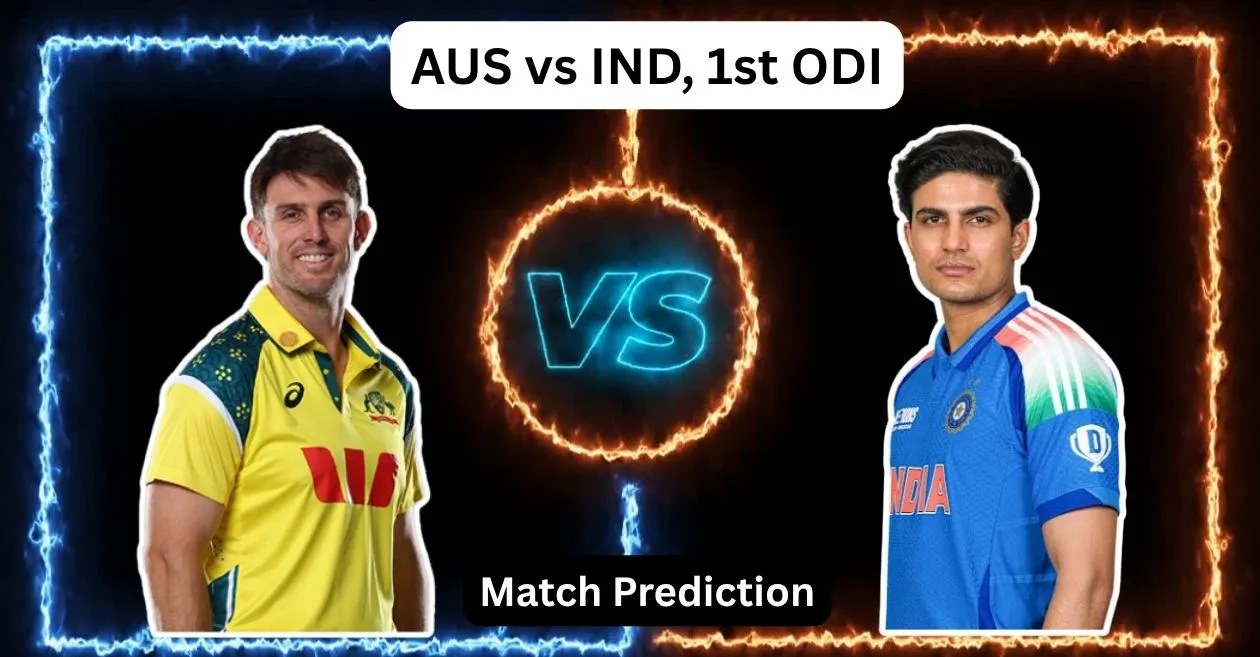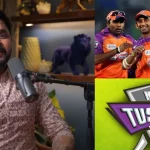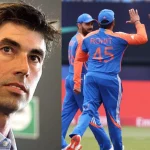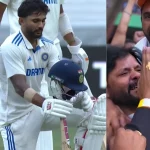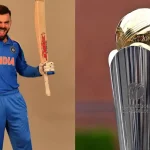Cricket’s most intense modern rivalry is ready to set the stage ablaze once again. On October 19, the action shifts to Perth Stadium, where Australia and India collide in the 1st ODI of the 2025 bilateral series. The contest isn’t just another chapter in their long-standing rivalry — it’s the start of a new era, marked by fresh leadership, evolving team combinations, and a fierce hunger for dominance in the 50-over format.
This series opener carries extra weight. India begin life under Shubman Gill’s full-time ODI captaincy, while the hosts continue their transition under Mitchell Marsh, who has quickly grown into the leadership mantle after a year of inconsistent results. Both teams have something to prove, both have something to protect — and both know that Perth’s bouncy track will expose even the smallest weakness.
A New Dawn for Team India: Shubman Gill Steps Up
For India, this tour marks a crucial post-tournament transition. After the highs and lows of their previous campaigns, the team has opted for continuity mixed with youthful energy. Shubman Gill, long regarded as India’s next-generation batting pillar, now faces his biggest test — leading a team filled with icons like Rohit Sharma and Virat Kohli, both returning after a well-earned rest.
Gill’s calm demeanor and sharp cricketing intellect make him an intriguing captain. He inherits a dressing room packed with experience but also bubbling with the enthusiasm of rising stars. His challenge lies in striking the right balance between flair and discipline, between aggression and patience — the very qualities that define successful Indian sides in Australia.
“This is a big opportunity for me to learn, lead, and challenge myself against the best,” Gill said earlier this week. “Australia is never easy, but that’s what makes this rivalry so special.”
The team combination speaks of intent. India’s batting order blends reliability with explosiveness — Yashasvi Jaiswal’s aggression at the top, Gill’s classical control, Kohli’s stability, and Shreyas Iyer’s middle-order steel. Add to that KL Rahul’s versatility and Axar Patel’s all-round balance, and India have a unit capable of adapting to any challenge.
However, their success at Perth will depend on how they negotiate the new ball. The conditions in Western Australia are unforgiving — steep bounce, late movement, and little room for error. For players like Jaiswal and Iyer, this could be a defining test of temperament.
The Indian Bowling Attack: Fast and Fearless
India’s bowling lineup is as potent as it’s promising. Mohammed Siraj will lead the pace attack, and his ability to extract movement at high speeds makes him a key threat on this surface. Alongside him, Arshdeep Singh brings left-arm variety and swing, while Harshit Rana and Prasidh Krishna offer raw pace and bounce.
Spin, traditionally India’s strength, will play a supporting role here. Kuldeep Yadav’s wrist-spin could be the trump card in the middle overs, especially against Australia’s right-heavy lineup, while Axar Patel will provide control and depth in both departments. Washington Sundar’s inclusion hints at flexibility — he could play as a floating option if India opt for an extra batter or all-rounder.
The bowling group looks balanced, but as history suggests, Indian success in Perth depends on early breakthroughs. The first 10 overs could set the tone for the entire match.
Australia’s Transition Continues: Marsh Looks to Regain Momentum
For the hosts, this series is about regaining rhythm and restoring dominance in a format that once defined them. Under Mitchell Marsh’s leadership, Australia have had flashes of brilliance but lacked consistency. Losing three ODI series earlier this year raised questions about their middle-order depth and bowling efficiency, but playing at home offers a perfect chance for redemption.
Marsh has retained a core that blends experience with experimentation. The top order remains formidable — Travis Head, Marnus Labuschagne, and Mitchell Marsh himself form a trio capable of dictating the pace of the innings. Matthew Short and Matt Renshaw bring flexibility, while Josh Philippe’s return as wicketkeeper-batter adds spark to the lower-middle order.
The exciting additions of Cooper Connolly and Mitchell Owen underline Australia’s commitment to nurturing young talent. Connolly, a local favorite from Western Australia, will relish his home debut. His natural aggression suits Perth’s bounce, and his all-round ability could prove handy in the lower order.
However, the biggest talking point remains Australia’s bowling unit — one of raw pace and proven pedigree.
The Pace Arsenal: Starc, Hazlewood, and the Perth Factor
Few attacks in world cricket can match the intimidation factor of Mitchell Starc and Josh Hazlewood steaming in on a lively Perth deck. Starc’s searing inswingers and Hazlewood’s accuracy will test India’s top order to the limit. Supporting them are Ben Dwarshuis, Xavier Bartlett, and Nathan Ellis, providing options for both new-ball and death-overs control.
The left-arm spin of Matthew Kuhnemann adds variation, but Perth’s nature means spin will likely play a minimal role. Instead, Australia will back their pace battery to hunt in pairs, especially in the powerplay overs.
Historically, Perth’s fast and bouncy track has favored Australian quicks, but surprisingly, the home side’s record at Optus Stadium is underwhelming — three losses in as many ODIs. For Marsh’s men, this is an opportunity to reverse that narrative.
AUS vs IND: Head-to-Head Record
Few rivalries in world cricket have been as fiercely contested as Australia vs India. Across formats, these two nations have redefined modern cricket’s competitive spirit.
In ODIs, the numbers tilt slightly in Australia’s favor:
-
Matches Played: 152
-
Australia Wins: 84
-
India Wins: 58
-
No Results: 10
Yet, recent history tells a different story. India have won three of their last five ODI series against Australia, including historic away victories. The balance of power, once heavily tilted toward the Aussies, has steadily equalized — making every encounter an unpredictable spectacle.
Perth Stadium Pitch Report: Fast, Bouncy, and Unforgiving
Perth’s Optus Stadium is one of the most challenging surfaces in world cricket. Known for its extra bounce, lively seam movement, and early unpredictability, it’s a paradise for fast bowlers and a nightmare for batters who lack patience.
Only three ODIs have been played here so far, and the statistics are revealing:
-
Teams batting second have won two of those matches.
-
The average first-innings score stands at around 183.
-
Fast bowlers have taken five times more wickets than spinners.
What this means is simple: survive the first 10 overs, and the game opens up. The ball tends to come nicely onto the bat under lights, allowing stroke-makers to capitalize in the second innings. That’s why the toss becomes crucial — teams prefer chasing as the surface eases out and the dew factor slightly assists batting.
Weather forecasts look favorable — partly cloudy skies and temperatures hovering around 25°C. Expect the ball to zip through early but conditions to settle beautifully for evening batting.
A total around 260–270 could be match-winning, given the venue’s track history.
Key Players to Watch
Shubman Gill (India)
All eyes will be on Gill — not just as a captain, but as the anchor of India’s top order. His ability to play the rising ball and rotate strike will determine how India fare against Australia’s pace trio. A calm fifty here could define his leadership debut.
Mohammed Siraj (India)
Siraj has matured into one of India’s premier pacers, and Perth’s bounce suits his aggressive length. If he can remove either Head or Marsh early, India’s momentum will spike instantly.
Mitchell Marsh (Australia)
The Australian skipper’s dual role as a power-hitter and leader makes him indispensable. His confidence at the crease and instinctive captaincy will set the tone for the hosts.
Mitchell Starc (Australia)
There’s no better sight in world cricket than Starc bowling with rhythm in Perth. His ability to swing the new ball at 145+ km/h could make him the match-winner, especially if India bat first.
Virat Kohli (India)
Back after a break, Kohli’s hunger will be immense. His record in Australia is stellar, and his composure against pace-heavy attacks could be the stabilizing factor for India in crunch moments.
Team Combinations and Strategy
India’s Likely XI
-
Rohit Sharma
-
Shubman Gill (c)
-
Virat Kohli
-
Shreyas Iyer
-
KL Rahul (wk)
-
Yashasvi Jaiswal / Axar Patel (depending on conditions)
-
Axar Patel / Washington Sundar
-
Mohammed Siraj
-
Arshdeep Singh
-
Harshit Rana
-
Kuldeep Yadav
Australia’s Likely XI
-
Travis Head
-
Mitchell Marsh (c)
-
Marnus Labuschagne
-
Matthew Short
-
Josh Philippe (wk)
-
Cooper Connolly
-
Mitchell Owen
-
Mitchell Starc
-
Josh Hazlewood
-
Ben Dwarshuis
-
Matthew Kuhnemann
Both sides might tweak based on toss outcomes, but one thing is certain — both captains will prefer chasing given Perth’s track behavior.
Key Battles to Watch
Gill vs Starc
A test of composure versus raw aggression. Starc will look to target Gill with the new ball, angling it across from over the wicket. If Gill survives that early storm, India will be well-placed.
Kohli vs Hazlewood
This duel has history. Kohli’s mastery of line and length will be tested again against Hazlewood’s accuracy. Expect a gripping mini-battle of patience and precision.
Marsh vs Siraj
Two high-energy players — one with the bat, one with the ball. Marsh’s intent early in the innings could determine Australia’s scoring tempo. Siraj’s challenge will be to keep him quiet.
Match Scenarios and Prediction
Scenario 1: Australia win the toss and bowl first
The morning breeze and seam movement will aid Starc and Hazlewood. India’s top order could face testing conditions early, but once the ball softens, players like Kohli and Gill could anchor a recovery. If India bat deep, a total around 350–360 isn’t out of reach.
Scenario 2: India win the toss and bowl first
Siraj and Arshdeep could exploit early bounce to put Australia under pressure. Marsh and Labuschagne might rebuild, but Kuldeep’s middle-overs variations could hold the key. Expect Australia to post 330–340 if they find rhythm.
Predicted Result:
Given Perth’s chasing advantage and both teams’ power-hitting depth, the team batting second holds the edge. Expect a thrilling contest, but conditions suggest a tight chase under lights — possibly decided in the final five overs.
A Modern Classic in the Making
The India-Australia rivalry has always delivered — from Sydney’s epic battles to the Gabba heroics. Perth 2025 promises another chapter filled with intensity, emotion, and elite cricket.
For Shubman Gill, this match is more than a debut — it’s a statement of intent, a chance to lead a new Indian generation with authority. For Mitchell Marsh, it’s a mission to reclaim Australia’s ODI supremacy on home turf.
Both sides brim with talent. Both have vulnerabilities. But one thing is certain — when Australia and India collide, cricket wins. Expect pace, passion, and pulsating drama when the first ball thunders into the Perth turf on October 19.
Please check for information on the best betting sites in India – https://selectory.org/best-betting-sites/
